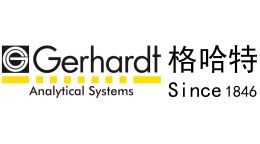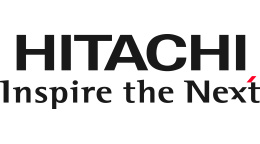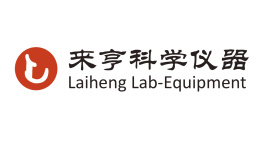未充分利用的果实盐肤子蛋白质、总脂肪、脂肪酸含量的检测
检测样品 其他水果制品
检测项目 营养成分
参考标准 GB 5009.6 食品中脂肪的测定
方案详情文
智能文字提取功能测试中
曼尼普尔邦未充分利用的果实盐肤子的生物活性和营养品质Bioactivity and nutritional quality of nutgall (Rhus semialata Murray), an underutilized fruit of ManipurTYPE Original Research PUBLISHED 05 June 2023DOI 10.3389/fnut.2023.1133576Frontiers in Nutrition 10.3389/fnut.2023.1133576Singh et al. OPEN ACCESS EDITED BY Xiangfeng Kong, Chinese Academy of Sciences (CAS), China REVIEWED BY Dipayan Sarkar, Agricultural Research Service, United States Department of Agriculture, United States Heiplanmi Rymbai, The ICAR Research Complex for North Eastern Hill Region, India *CORRESPONDENCE Subhra Saikat Roy subhrasaikat@gmail.com RECEIVED 29 December 2022ACCEPTED 10 May 2023 PUBLISHED 05 June 2023 CITATION Singh TS, Kshetri P, Devi AK, Langamba P, Tamreihao K, Singh HN, Akoijam R, Chongtham T, Devi CP, Singh TB, Chongtham S, Devi YP, Kuna A, Singh SG, Sharma SK, Das A and Roy SS (2023) Bioactivity and nutritional quality of nutgall (Rhus semialata Murray), an underutilized fruit of Manipur. Front. Nutr. 10:1133576. doi: 10.3389/fnut.2023.1133576 COPYRIGHT © 2023 Singh, Kshetri, Devi, Langamba, Tamreihao, Singh, Akoijam, Chongtham, Devi, Singh, Chongtham, Devi, Kuna, Singh, Sharma, Das and Roy. This is an open-access article distributed under the terms of the Creative Commons Attribution License (CC BY). The use, distribution or reproduction in other forums is permitted, provided the original author(s) and the copyright owner(s) are credited and that the original publication in this journal is cited, in accordance with accepted academic practice. No use, distribution or reproduction is permitted which does not comply with these terms. Bioactivity and nutritional quality of nutgall (Rhus semialata Murray), an underutilized fruit of Manipur Thangjam Surchandra Singh 1,2, Pintubala Kshetri 1, Asem Kajal Devi 1, Pangambam Langamba 1, Keishing Tamreihao 1,3, Heikham Naresh Singh 1, Romila Akoijam 1, Tania Chongtham 1, Chingakham Premabati Devi 1, Tensubam Basanta Singh 1, Sonia Chongtham 1, Yumnam Prabhabati Devi 1, Aparna Kuna 4, Soibam Giri Singh 2, Susheel Kumar Sharma 1,5, Anup Das 6 and Subhra Saikat Roy 1,7* 1 ICAR Research Complex for NEH Region, Manipur Centre, Imphal, India, 2 YK College, Wangjing, Manipur, India, 3 St. Joseph College, Ukhrul, Manipur, India, 4 Quality Control Laboratory, Professor Jayashankar Telangana State Agricultural University, Hyderabad, India, 5 ICAR-Indian Agricultural Research Institute, New Delhi, India, 6 ICAR Research Complex for Eastern Region, Tripura Centre, Lembucherra, India, 7 ICAR-Central Citrus Research Institute, Nagpur, Maharashtra, India Introduction: Underutilized fruits plays a significant role in socio economic, cultural, nutritional and ethnomedicinal status of tribal people. However, scientific studiesonthenutritionalandotherpharmaceuticals/biologicalactivitiesof these fruits are meagre. Hence, the present study dealt with the quantification of nutritional quality and deciphering the bioactivity of nutgall (Rhus semialata Murray syn. Rhus chinensis Mill.), an underutilized fruit crop mainly found in foothill tracks of Eastern Himalaya, India, China, Japan, Korea and other South East Asian countries. Methods: The Rhus semialata Murray fruits were collected from fvie difefrent locations in Purul sub-division, Senapati district, Manipur, India. The nutritional composition of the fruit pulp was analysed. Further the fruit pulp was extracted inmethanolandwater.Themethanolandwaterextractswerestudiedfor bioactivity properties such as antioxidant, antihyperglycemic, antihypertensive, antihyperuricemia, anti-tyrosinase, and antimicrobial activity. Results and discussion: The fruit was rich in essential fatty acids. The presence oflinoleicandoleicacids,alongwithtracesofdocosahexaenoicacidand eicosapantaenoic acid, revealed the potential food value of the fruit. 59.18% of the total amino acid composition of the protein present was constituted by essential amino acids. The IC50 value of methanolic extract (MExt) and Water extract (WExt) of the fruit were recorded as 4.05 ± 0.22 and 4.45 ± 0.16 ug/mL, respectively, in the DPPH assay and 5.43 ± 0.37 and 11.36 ± 2.9 pg/mL, respectively, in the ABTS assay as compared to Ascorbic acid (3 and 5.4 ug/mL in DPPH and ABTS assay, respectively). The CUPRAC assay also showed a high antioxidant potential of MExt and WExt (1143.84 ± 88.34 and 456.53 ± 30.02 mg Ascorbic Acid Equivalent/g, respectively). MExt and WExt of the fruit were more active against a -glucosidase (IC50of1.61±0.34and7.74±0.54 mL,respectively)than a -amylase enzyme (IC50 14.15 ± 0.57 and 123.33 ± 14.7 ug/mL, respectively). In addition, the methanolic fruit extract showed low to moderate pharmacological potential in terms of antihypertensive (Angiotensin converting enzyme-I inhibition), antihyperuricemia (xanthine oxidase inhibition), anti-tyrosinase, and antimicrobial activity. The IC50 values of angiotensin-converting enzyme I inhibition, xanthine oxidase inhibition and tyrosinase inhibition were recorded as 13.35 ± 1.21 mg/mL, 93.16 ± 4.65 mg/mL, and 862.7 ± 12.62 pg/mL, respectively. The study evidently indicates that nutgall fruit is a potential source of phytonutrients, bestowed with commercially exploitable, multifaceted health beneftis KEYWORDS Rhus semialata Murray, nutrients, amino acids, fatty acids, antioxidant, antidiabetic, xanthine oxidase inhibition Introduction Fruits are known to be rich source of antioxidants, soluble fbier, nutrients, phenols, falvones, vitamins, and minerals. Low intake of fruits is connected with unhealthy diets and several chronic illnesses such as aging, cancer, and cardiovascular disease (1). Edible wild fruits or underutilized fruits serve an important role in augmenting people’s diets, particularly in rural and tribal areas. Underutilized fruit crops(a neglected and hidden resource) are referred to the fruit crops that have potential but are not farmed commercially on a large scale (2). Because of their afofrdability and easy accessibility in ethnic food baskets, they have the potential to play a prospective role in attaining nutritional security and eradicating malnutrition, particularly in disadvantageous areas. Underutilized fruits are also wonderful source of phytonutrients and inadvertently contribute to control “hidden hunger” among the underprivileged communities. Recognizing the signifciance of underutilized food crops, the International Centre for Underutilized Crops (ICUC) promotes their cultivation, usage, and marketing. Tehse crops are also important for sustaining floral biodiversity (3). Furthermore, less economic input is requiredincultivationbecausethesecropsrequireminimal maintenance and do not require much in the way of agro-inputs such as irrigation, fertilizers, pesticides, and so on. Tehy are also well adapted to local agro-ecology and possess systemic resistance against biotic and biotic stresses. Underutilized fruits are not only high in nutrients, but they are also believed to have a wide array of therapeutic properties such as antiaging, antibacterial, antidiabetic, anti-infalmmatory, antihypertensive, cardioprotective, hypolipidemic, and anti-tyrosinase properties (4). Singh et al. (5), for example, revealed that Viburnum mullaha (Buch.-Ham. Ex D. Don), an underutilized wild edible fruit of the Indian Himalayan region, had anti-tyrosinase and antiaging activity. Antidiabetic properties have been identifeid in underutilized fruits found in Indian subcontinent such as Syzygium cumini L. (6) and Spondias mangifera (7). Similarly, Ibrahim et al. (8) found that five underutilized Nigerian fruits, Ziziphus spinachristi, Ziziphus mairei, Parkia biglobosa, Detarium microcarpum, and Parinari macrophylla inhibited intestinal maltase and sucrase in rats. Consumption of fruit has been shown to signifciantly reduce bloodpressure.Someunderutilizedindigenousfruits(Trapa bispinosa,Phoenixsylvestris,Ciccaacida,Achrassapota,and Averrhoacarambola )havebeenshowntoinhibitangiotensin converting enzyme I (9). Antibacterial activity has been observed for Syzygiumcalophyllifolium (10),Garciniagummi-gutta (L.) N. Robson, and Artocarpus lacucha Buch.-Ham (11). Since time immemorial, traditional healers, as well as ayurveda, unani, and homeopathy, have employed many of the underutilized indigenous fruits or plant parts as medication (12). Because of these reasons, underutilizedfruitshavethepotentialtobed employedas nutraceuticals and functional foods. Teh Himalayan range is the home to the world’s largest agro-ecosystemandtherarestcropbiodiversity(13).InIndia,the Himalayan region is a rich reservoir of many underutilized fruit crops. However, comprehensive scientifci research on nutritional and other pharmaceutical potential of these fruit crops has been sporadically undertaken. Nutgall (Rhus semialata Murray syn. R. chinensis Mill., R. javanica Linn.) is one such underutilized fruit crop found in the hills and valley regions of North East Indian Himalayan region. It is also wildly distributed in China, Japan, Java, North Korea, Malaysia, Indo-China Peninsula, Indonesia, Europe, and USA (14–16). Teh genus Rhus belongs to the Anacardiaceae family and consists of more than 250 species distributed in the tropics, subtropics and temperate regions. Te hfruits are edible and have a sharp, acidic taste. Te hfruits are spheroidal and drupe, slightly falttened, and are about 4–5 mm in diameter. It is separated into pulp and seed. Teh fruits are nutrient-dense, including macronutrients, micronutrients, vitamins (vitamin C, B5, B6, and B9), and phytochemicals such as polyphenols, carotenoids, falvonoids, and others. It also includes vital fatty acids and amino acids, confriming the its nutritional excellence (17).Asidefromitsnutritionalvalue,thefruitalsodemonstrated medicinalqualities.TehinfusionofRhusfruits,forexample,is traditionally used in traditional medicine practices to treat fungal, bacterial,andprotozoaldiseases(diarrheaanddysentery),food poisoning, and allergies in both people and animals (18). According to Bose et al. (19), the methanolic fruit extract of R. semialata demonstrated anti-diarrheal efcfaciy in rats by reducing gastrointestinal propulsion and fluid secretion. Te hfruit has also been made into digestion pills (20). Given this backdrop, the current study sought to investigate the nutritional and biological activity of Rhus semialata Murray, an underutilized fruit collected from Manipur, India. Tehre are reports in the literature on the nutritional (carbohydrate, fat, protein, mineral, etc.) and some medicinal qualities of this fruit. However, the current study focused on other aspects of the nutritional proflie, such as amino acid content, important fatty acids, and so on. Furthermore, biological properties such as antioxidant, antihypertension, anti-hyperglycemic, antityrosinase, anti-gout, antibacterial activities and cytotoxicity were also assessed. Methodology Collection of samples and processing Matured fruits were collected from fvie difefrent locations in Purul sub-division, Senapati district, Manipur, India (25.37 N, 94.22E, 1,620 m above msl). About 2 kg of fresh fruit was collected from fvie difefrent plants (400 g each plant) in each location and removed any unwanted non-fruit portions then dried overnight in the oven at 40–45°C. Teh dried fruit was hand crushed (using a sterile hand glove) to detach the pulp from the seed. Tehn the pulp was separated by winnowing and ground to a fine powder and stored in an air tide container at 4°C until further used. Preparation of methanol extract (MExt) Tengramoffruitpulppowderwassoakedinmethanol (100 mL) at room temperature for 24 h with shaking at 180 rpm (Spinix orbital shaker, Tarson). Extraction was repeated for 48 and 72 h and flitered through Whatman no. 1 fliter paper followed by drying at 45°C under low pressure (Rotatory evaporator, IKA, Germany). Teh dried sample was stored at −20°C until used for biological activity assay. Preparation of water extract (WExt) Ten gram of fruit pulp powder was soaked in deionized water (50 mL) at room temperature for 3 h with shaking at 180 rpm (Spinix orbital shaker, Tarson) then centrifuged at 10,000 rpm for 10 min. Extraction was repeated with the residue for another hour. Te hsupernatants were pooled in a 250 mL falsk and kept at −20°C for overnight. Te hsample was lyophilized at −80°C. Te hlyophilized sample was stored at −20°C until further use for biological activity assay. Proximate and nutritional content For proximate and nutrient analysis, fruit pulp sample was used. Teh parameters for proximate analysis viz. moisture (Method No. 934.01), crude protein (Method No. 2001.11), fat (Method No. 2003.05), total carbohydrate, ash content (Method No. 942.05) and micronutrients(Method No. 975.03) were determined according to AOAC (21). Total carbohydrate content was calculated by difefrence (22). Te hvitamin C wasdeterminedbythespectrophotometricmethod(23).For determination of ash and micronutrient analysis, 1 g dried sample was taken in a pre-weighed 15 mL crucible and digested at 550°C for 4 h in a mufef fulrnace till white residue remained. Te hresidue was weighed and used for ash determination. For micronutrient analysis, the residue was dissolved in 10 mL HCl (2 N) using a glass rod and then flitered in Whatman No. 42 (ashless). Te hvolume was made upto 50 mL using distilled water. Te hmicronutrients (Ca, Fe, Zn, Mn, and Cu) were measured in an atomic absorption spectrophotometer (AAS) (Perkin Elmer,United States).Totalphosphorous(P)wasmeasuredby spectrophotometer (450 nm) using ammonium vanadate-ammonium molybdate reagent and potassium was measured in a falme photometer (BioEra, India). Te hvalues were expressed in mg/100 g sample. Amino acid analysis Teh amino acid proflie of Rhus semialata Murray fruit sample was determined using HPLC (Agilent, United States) equipped with a diode array and multiple wavelength detector. Te hfruit sample was hydrolyzed with 6 N HCl, and the hydrolyzed peptide samples were derivatized with OPA (o–phthalaldehyde for primary amino acids) and FMOC (9–fluorenylmethyl chloroformate for secondary amino acids) as reported by Sahoo et al. (24). Teh derivatized samples were analyzed for amino acid composition using a Zorbax Eclipse–AAA column(250 mm × 4.6 mm,L × ID,particlesize5 m)(Agilent Technologies, Santa Clara, CA). Teh amino acid composition was expressed as the percent amino acid of the total protein content of the analyzed sample. Fatty acid analysis Te htotal fat content of the moisture-free sample was extracted in Gerhardt Soxtherm fat analyzer [(21), Method No. 2003.06; (25)]. Fatty acids were analyzed by AOAC (21) (Method No. 996.06) and Shaik et al. (25) methods. Teh isolated fat was trans-esterifeid using0.5 M methanolic KOH to form fatty acid methyl esters (FAME), which were then estimated by Gas Chromatograph (7890B of Agilent Technologies) equipped with a falme ionization detector and an Agilent-DB-FFAP column (nitroterephthalic-acid-modifeid polyethylene glycol (PEG) of high polarity for the analysis of volatile fatty acids). Teh temperature of the column was maintained at an initial temperature of 100°C for 5 min, then raised up to 240°C at the rate of 4°C/min. Nitrogen was used as carrier gas at a column flow rate of1.0 mL/min.Tehdetectortemperaturewasmaintainedat 280°C. Standards used were 47,885-U Supelco ® 37 Component FAME Mix (10 mg/mL in methylene chloride). Sample fatty acid composition was compared with standard fatty acid composition, and percentages were calculated by normalization of peak areas. Antioxidant assay 2,2-diphenyl 1- picrylhydrazyl (DPPH) assay 0.1 mL of each of the fvie difefrent concentrations of the extract wasmixedwith1.9 mLDPPHreagentpreparedinmethanol (A517 = 1.1 + 0.01). Te hmixture was incubated for 30 min in the dark and then read at 517 nm. Te hradical scavenging activity (RSA) of each extract was calculated as follows (26). From the RSA%, 50 inhibitory concentration (IC50) was calculated and expressed in u g/mL. IC50 is defined as the minimum amount of the extract required to scavenge half of the initial stable free radical in 30 min in 1 mL of reaction in the dark. 2,2′-azino-bis (3-ethylbenzothiazoline-6-sulphonic acid) (ABTS) assay ABTS radical scavenging activity was performed as described by Singh et al. (26). Te hreaction mixture containing 0.1 mL of extract was mixed with 1.9 mL ABTS radical (A734 = 1.0 ± 0.01) then incubated for 30 min in the dark, and the absorbance was read at 734 nm. RSA and IC50 of the extract were calculated as described above. Ferric reducing antioxidant power (FRAP) assay 0.1 mL of each extract dissolved in methanol was reacted with 1.9 mL FRAP reagent and incubated for 5 min and the absorbance was read at 593 nm. FeSO4 solution (5–30 u g/mL) was used as standard and ferric reducing antioxidant power was expressed as mM ferrous equivalent per gram of the extract (mM Fe Eq/g Ext.) (26). CUPRAC (cupric ion reducing antioxidant capacity) assay 0.5 mLsamplewasmixedwith0.5 mLcopperIIchloride (10 mM) in a tube. 0.5 mL neocuporine solution was added, and followed by 0.5 mL ammonium acetate solution (1 M). Teh reaction mixture was incubated for 30 min at room temperature and the color developed was read at 450 nm. Ascorbic acid was used as a standard. Cupric ion reducing antioxidant capacity was expressed in milligram ascorbic acid equivalent per gram of extract (mg AAE/g extract) (27). Phenolic and falvonoid assay Te htotal phenolic and falvonoid content of the fruit extract was analyzedbyFolinCiocalteuandaluminumchloridemethods, respectively described in Singh et al. (26). Phenolic content was expressed in milligram of gallic acid equivalent per gram of extract (mg GAE/g), whereas falvonoid content was expressed in milligram of quercetin equivalent per gram of extract (mg QE/g). Pharmaceutical property Antihyperglycemic activity o -amylase inhibitory assay 0.1 mL of the sample extract (5–50 u g) was taken in a 2 mL tube and mixed with 0.1 mL enzyme (1 U/mL, porcine pancreas), incubated at 37°C for 20 min. Te henzyme reaction was initiated by the addition of0.2 mLofstarchsolution(1%)andcontinuedfor3 minat 37°C. Afetr 3 min, 0.2 mL dinitrosalicylic acid (DNSA) reagent was added and kept incubated at 80°C, followed by 1.4 mL of distilled water. For the control reaction, instead of sample, the bufefr was added, and a blank was prepared by the addition of DNSA before the addition of the enzyme. Teh color complex was read at 540 nm. Acarbose (1–10 p g) was used as a standard positive control. From the percentage inhibition, IC50 was calculated (28). a -glucosidase inhibitory assay 0.1 mL of the sample extract (0.1–50 g g) was taken in a 2 mL tube andmixedwith0.2 mLenzyme(0.5 U/mL,a -glucosidasefrom S. cerevisiae ), incubated at 37°C for 10 min. To the mixture solution,0.1 mL 4-nitrophenyl a -D-glucopyranoside (2.5 mM) was added and incubated for 5 min at 37°C. Te hreaction was terminated by the addition of 0.2 mL sodium carbonate (20%) followed by the addition of 1 mL water. Teh color complex was measured at 405 nm against a reagent blank (29). Xanthine oxidase inhibitory assay 0.1 mL sample of difefrent concentrations (50–300 u g) was taken in a tube and the volume was made up to 0.6 mL with bufefr (0.05 M, pH 7.5), and 0.1 mL enzyme (0.2 U/mL), followed by incubation for 15 min at 37°C. In the reaction mixture, 0.2 mL substrate (xanthine; 0.15 mM) was added and then incubated for 30 min at 37°C. Afetr30 min, 0.2 mL HCl (0.5 M) was added and then read at 293 nm against a reagent blank. Allopurinol was used as a positive control (30). ACE (angiotensin-converting enzyme I) inhibitory assay 0.01 mL of enzyme was added to a tube containing 0.140 mL sample prepared in bufefr (pH 8.3) and 0.05 mL sodium chloride (300 p M). To the reaction mixture, 0.5 mL substrate (hipuryl-his-leu) was added and incubated for 30 min. Afetr 30 min, the reaction mixture was kept in a boiling water bath for 10 min. Afetr cooling, absorbance was read at 385 nm. Captopril was used as a positive control (30). Antityrosinase assay 0.340 mL of difefrent concentrations of the sample (0.5–2 mg) was mixed with 0.02 mL enzyme (mushroom tyrosinase) and 0.360 mL substrate(16 mMDOPA)inatubeandthenreadat480 nm spectrophotometrically for 3 min for every 30 s. For control (100%activity), instead of sample, 0.340 mL bufefr was used. Kojic acid was used as a positive control (30). Antibacterial assay Teh Kirby-Bauer disk difufsion method (31) was used for the evaluation of the antibacterial activity of MExt. Four test organisms, viz.; Salmonella typhimurium (ATTC13311), Escherichia coli (MTCC739), Bacillus subtilis (MTTCC 121), Staphylococcus aureus (ATCC 1026), were grown in Mueller-Hinton broth (MHB) at 37°C and 160 rpm and brought to its exponential phase. Teh sample was prepared by dissolving the MExt in 50% DMSO (at 25 mg/mL w/v concentration)andfliteringthrougha(0.22 t m)syringefliter. Hundredmicroliterofeachbacterialstrain,equivalentto0.5McFarland turbidity were spread over sterile Mueller-Hinton agar (MHA) plate using a sterile swab. A 20 p L sample (0.5 mg) impregnated in a 6 mm sterile disc was seeded on the freshly spread MHA plates and incubated for 24 h at 37°C. Chloramphenicol 0.025 mg was used as a positive control. One reagent control containing the bufefr and solvent used was also included in the experiment. Teh zone of inhibition was recorded using a Vernier caliper. In vitro cytotoxicity assay Tehcytotoxic activityof MExt was investigated using Sulforhodamine B colorimetric (SRB) assay against HeLa (human cervical cancer cell line). Teh cell was maintained in a Dulbecco’s ModifeidEagleMedium(DMEM).Tehcellsweresubjectedto difefrentconcentrationsoftheextracts(5–100 p g/mL)for48 h. Doxorubicin (5–100 u g/mL) was used as a positive control. Teh monolayer cells were then fixed with 10% Trichloroacetic acid (TCA) for 1 h at 40°C followed by washing with water. Afetr drying, the cell plates were stained with SRB for 30 min and then washed with 1%acetic acid. Teh SRB dye bound to the protein was then dissolved by adding10 mMTrisbase(pH10.5).TehSRBdyereleasedwas quantifeidbytakingabsorbanceat510 nminVarioskanFlash Multimode Reader (Tehrmo Fisher Scientifci, United States) (32). Statistical analysis All the assays were performed with three replications, and each replication had 3 triplicates. Te hdata are presented as mean ± standard deviation (SD). Teh IC50 values of assays were calculated using the Prism software (GraphPad, United States). TABLE 1Proximate constituent of Rhus semialata fruit pulp. Parameter g/100 g Moisture 11.32 ± 0.45 Crude protein 4.25 ± 0.04 Crude fat or oil 19.21 ± 0.76 Total carbohydrate 59.20 ± 1.68 Ash 4.02 ± 0.13 Vitamin C 95.24 ± 0.15 Micronutrient mg/100 g P 218.00 ± 6.8 Fe 19.92 ± 0.2 Mg 14.96 ± 1.2 Zn 2.43 ± 0.4 Cu 1.19 ± 0.08 Mn 0.93 ± 0.06 Results Nutritional analysis Tehnutritionalcontentsofthe Rhussemialata Murrayare presented in Table 1. Teh fruit pulp was mainly comprised of moisture (11.32 ± 0.45%), total carbohydrate (59.2 ± 1.68%), crude fat (19.21 ± 0.76%), ash (4.02 ± 0.13%), and crude protein (4.25 ± 0.04%). Te hfruit also contained vitamins and minerals. Te hvitamin C content of the fruit was 95.24 ± 0.15 mg/100 g while the nutrients such as P, Fe, Mg, Zn, Cu, and Mn were 218 ± 6.8, 19.92 ± 0.2, 14.96 ± 1.2, 2.43 ± 0.4,1.19 ± 0.08, and 0.93 ± 0.06 mg/100 g, respectively. Amino acid composition A total of 17 amino acids were detected in the fruit sample (Table 2). Of these, the essential amino acids, (EAAs) viz. histidine, isoleucine, leucine, lysine, methionine, phenylalanine, threonine and valine, constituted 59.18% of the total amino acid composition. Among the EAA, threonine (27.21%) was the highest, followed by lysine (14.64%) and leucine (4.71%), while isoleucine (1.92%) was the lowest. Teh two EAAs, threonine and lysine, constituted 41.85%of the total amino acid content. Teh non-essential amino acid content was in the range of 0.71–8.64%. Among the nonessential aminoacids,glutamate(8.64%)wasrecordedasthehighest followedbycysteine(7.80%),serine(5.63%),andArginine (5.43%),whileglycine(1.12%)andtyrosine(0.71%)were the lowest. Fatty acid composition Teh total fat content of the studied fruits was constituted by three difefrent groups of fatty acids: polyunsaturated fatty acid(PUFA)(50.62%),saturatedfattyacid(SFA)(35.13%),and monounsaturated fatty acid (MUFA) (12.54%), while 1.72% of fatty TABLE 2Amino acid composition of Rhus semialata Murray fruit pulp. Name of the amino acid % composition Trheonine 27.21 Lysine 14.64 Glutamine 8.64 Cystine 7.80 Serine 5.63 Arginine 5.43 Alanine 4.71 Leucine 4.71 Hydroxy proline 3.64 Aspartate 3.11 Valine 2.88 Phenylalanine 2.82 Methionine 2.75 Histidine 2.25 Isoleucine 1.92 Glycine 1.12 Tyrosine 0.71 acids were unknown fatty acids (Table 3). Teh PUFA included 8fatty acids, viz., Linoleic acid methyl ester (C18:2n6c), y-linolenic acid methyl ester (C18:3n6), o -linolenic acid methyl ester (C18:3n), Cis-11,14,17 eicosatrienoic acid methyl ester (C20:3n3), Arachidonicacidmethylester(C20:4n6),Cis-5,8,11,14,17-eicopentaenoic acid methyl ester (C20:5n3), Cis-13,16-docosadienoicmethylester(C22:2)andCis-4,7,10,13,16,19-docosahexaenoic acid methyl ester (C22:6n3). Saturated fatty acids (SFA) were obtained in the ranges of 0.08–28.46% of total fatty acids. Teh most abundant saturated fatty acid was palmitic acid (28.46%), followed by steric acid (C18:0) (2.92%) and butyric acid (2.38). Monounsaturated fatty acids were obtained in the range of 0.33–11.53%.TehhighestMUFAwasrecordedasoleicacid (11.15%), and followed by nervoinic acid (0.35%). Antioxidant activity Te hfruit exhibited signifciant free radical scavenging activity in the ABTS and DPPH assay. In the ABTS assay, the IC50 value for MExt and WExt was exhibited as 5.43 ± 0.37 u g/mL and 11.36 ± 2.91 u g/mL, respectively. While the IC50 value of standard ascorbic acid was recorded as 3.0 u g/mL. In the DPPH assay, the IC50 value for MExt and WExt was found to be 4.05 ± 0.12 u g/mL and 4.45 ± 0.06 u g/mL, respectively. While the IC50 value of standard ascorbic acid was recorded as 5.40 p g/mL. Teh fruit extract also exhibited ferric and cupric ion-reducing antioxidant activity. Teh FRAP assay revealed that the MExt and WExt could reduce 4.89 ± 0.68 mM of Fe+3/g Ext. and 1.23 ± 0.07 mM Fe+3/g Ext, respectively. In the CUPRAC assay, the antioxidant activity of the fruitexhibited1134.84 ± 88.06 mgAAE/gand456.53 ± 30.02 mg AAE/g for MExt and WExt, respectively (Table 4). TABLE 3Fatty acid composition of Rhus semialata Murray fruit pulp. Names of fatty acid % composition Saturated fatty acid (SFA) 35.13 Butyric acid (C4:0) 2.38 Myristic acid (C14:0) 0.15 Palmitic acid (C16:0) 28.46 Heptadecanoic acid (C17:0) 0.09 Stearic (C18:0) 2.92 Arachidic acid (C20:0) 0.20 Heneicosanoic acid (C21:0) 0.13 Behenic acid (C22:0) 0.72 Lignoceric acid (C24:0) 0.08 Monounsaturated fatty acid (MUFA) 12.54 Palmitoleic acid (C16:1) 0.33 Oleic acid (C18:1n9c) 11.53 Cis-11 eicosenoic acid (C20:1n9c) 0.33 Nervoinic acid (C24:1n9c) 0.35 Poly unsaturated fatty acids (PUFA) 50.62 Linoleic acid (C18:2n6c) 46.68 y-linolenic acid (C18:3n6) 2.61 α-linolenic acid (C18:3n) 0.49 Cis-11,14,17, eicosatrienoic acid (C20:3n3) 0.15 Arachidonic acid methyl ester (C20:4n6) 0.13 Cis-5,8,11,14,17- eicopentaenoic acid(C20:5n3) 0.27 Cis-13,16-docosadienoic acid (C22:2) 0.05 Cis-4,7,10,13,16,19-docosahexaenoicacid (C22:6n3) 0.24 Unknown 1.72 Teh bold value indicates the total value of the of the major fatty acid group SFA, MUFA, PUFA etc.) for example the total saturated fatty acid content is 35.13 which is further composed of individual fatty acids buytyric acid. . . . . . lignocric acid all the values of the individual fatty acid content will give the total value (i.e 35.13). Phenolic and falvonoid content Te hphenolic content of MExt and WExt fruit extract was found to be 310.37 ± 3.1 and 255.46 ± 4.4 mg GAE/g extract, respectively. Whereas the falvonoid content of MExt and WExt fruit extract were recordedas110.27 ± 20.23and83.02 ± 4.2 mgQE/gextract, respectively (Table 4). Pharmaceutical activity Antihyperglycemic activity Te hfruit extracts demonstrated anti-hyperglycaemic activity by inhibiting a -amylase and a -glucosidase enzyme (Table 5). Teh IC50value of MExt and WExt was found to be 14.15 ± 1.57 u g/mL and 123.33 ± 14.7 r g/mL, respectively. While the IC50 of standard acarbose TABLE 4Total phenolic, falvonoid content and antioxidant activity. Antioxidant Methanolextract Waterextract Vitamin C(positivecontrol) assay ABTS (IC50Hg/mL) 5.43 ± 0.37 11.36 ± 2.91 3.00 ± 0.40 DPPH (IC50Hg/mL) 4.05 ± 0.12 4.45 ± 0.06 5.40 ± 0.30 FRAP (mM Fe Eq/gExt) 4.89 ± 0.68 1.23 ± 0.07 – CUPRAC (mgAAE/g Ext) 1134.84 ± 88.06 456.53 ± 30.02 – Total phenolic (mgGAE/g) 310.37 ± 3.10 255.46 ± 4.40 – Total falvonoid(mgQE/g Ext) 110.27 ± 20.23 83.02 ± 4.20 – TABLE 5Bioactivity of Rhus semialata Murray fruit pulp. Bioactivity Methanolextract Water extract Positivecontrol a-amylase inhibitory 14.15 ± 1.57 123.33 ± 14.70 Acarbose: 6.12 ± 0.68 a-glucosidaseinhibitory 1.61 ± 0.34 7.74 ± 0.54 Acarbose: 404.00 ± 17.24 Xanthine oxidaseinhibitory 93.16 ± 4.65 192.20 ± 1.90 Allopurinol77.00 ± 0.08 ACE inhibitory 13.35 ± 1.21 34.57 ± 3.56 Captopril: 0.005 ± 0.0003 Tyrosinaseinhibitory 862.70 ± 12.62 1026.00 ± 38.00 Kojic acid:28.50 ± 2.00 was recorded as 6.12 ± 0.68 u g/mL. Teh fruit extract also inhibited the α -glucosidase enzyme. Te hIC50 value of MExt and WExt was found to be 1.61 ± 0.34 and 7.74 ± 0.54 u g/mL while the standard acarbose was 404 ± 17.24 u g/mL (Table 5). Xanthine oxidase inhibitory assay Teh methanolic fruit extract was found to inhibit the xanthine oxidaseenzyme.TehIC50ofMExtwas93.16 ± 4.65 u g/mLand 192.2 ± 1.9 p g/mL, respectively, while the standard drug allopurinol was 77 ± 0.085 p g/mL (Table 5). Angiotensin-converting enzyme-I (ACE) inhibitory assay Teh fruit extract showed inhibitory activity in Angiotensin-convertingenzyme-I.TehIC50valueofMExtandWExtwas 13.35 ± 1.21 u g/mL and 34.57 ± 3.56 u g/mL, whereas the standard captopril was 0.00458 ± 0.0 u g/mL (Table 5). Antityrosinase activity Tehfruitextractdisplayedinhibitoryactivityagainstthe tyrosinaseenzyme.TehIC50valueofMExtandWExtwas 862.7 ± 12.62 r g/mL and 1,026 ± 38 p g/mL, respectively, whereas the IC50 of the standard kojic acid was found to be 27.04 ± 1.6 p g/mL (Table 5). Antibacterial assay Te hMExt also exhibited promising antimicrobial activity against Salmonella typhi and Staphylococcus aureus. However, it did not inhibit the growth of Escherichia coli and Bacillus subtilis organisms. Te hinhibition zone of Salmonella typhi and Staphylococcus aureus were 9.5 ± 0.4 mm and 12.39 ± 0.07 mm, respectively (Figure 1 and Table 6). In vitro cytotoxicity assay Te hinhibition of HeLa cell growth by the fruit extract was observed in a dose-dependent manner. Teh IC50 of the MExt against HeLa cells was recorded as 61.55 ± 3.37 u g/mL as compared to the standardanticancercompoundDoxorubicin(2.37 ± 0.1 p g/mL)(Figure 2). Discussion Te hedible part of the Rhus semialata Murray fruit is its pulp. Teh pulp contributes 35.39% of the total weight of the fruit. Only the pulp portion was used for analysis in the present study. Te hproximate analysis of the present study revealed that the fresh fruit contained crude protein (4.25 ± 0.04%), crude fat (19.21 ± 0.76%), total carbohydrate (59.2 ± 1.68%),andash(4.02 ± 0.13%).Higheramountofprotein (8.13 ± 0.38%), lower fat (16.7 ± 0.18%), and carbohydrates (69.2%) content were reported by Loukrakpam et al. (17) in the same fruit, which might be due to the variation in the sample used for analysis (whole fruit including pulp and seed). Te hmineral composition of the fruit pulp suggestedthatthemostabundantmineralswerephosphorous (218 ± 6.8 mg/100 g),iron(19.92 ± 0.2 mg/100 g),andmagnesium (14.96 ± 1.2 mg/100 g). Tehse mineral nutrients are required by our Antibacterial activity of methanolic fruit extract of R. semialata Murray (a) Staphylococcus aureus (b) Salmonella typhi. bodies to stay healthy. Te hprotein present in this fruit contained both essential and non-essential amino acids. Interestingly, the essential amino acid composition was higher (59.18%) than the nonessential amino acids (40.82%). Essential amino acids are those amino acids that cannot be synthesized by our body and must be present in the human diet. Moreover, the fruit showed signifciant variation in EAA content ranging from 1.92 to 27.21% of total protein content. Generally, fruits contain less fat, however Rhus semialata Murray fruit was rich in fat (19.21 ± 0.76%). Shi et al. (33) reported a similar amount of fat content (19.68 ± 0.68 to 20.27 ± 1.33%) in Rhus chinensis Mill variety. Further analysis of the crude fat revealed that the fruit was rich in polyunsaturated fatty acids. Linoleic acid (C18:2n6c) constituted 92.21% of total PUFA. Te hessential fatty acids (EFA) such as n6 fatty acids (omega-6 fatty acid) and n-3 fatty acids (omega 3-fatty acid) constituted 49.42 and 1.15% of the total fat of the fruits, respectively. EFA and PUFA derivatives are important structural components of the cellular membrane and play an important role in signal transduction, particularly omega-6 fatty acids. Shi et al. (33) and Loukrakpam et al. (17) also demonstrated high percentage of unsaturated fatty acids in Rhus chinensis Mill, and high amount of linoleic acid (C18:2n6c) in Rhus semialata, respectively. Hence nutgall fruit is a potential source of unsaturated fatty acids. Unsaturated fatty acids fnid applications in the food (for formulation of dips and spreads) and pharmaceutical sectors. Most of the phytochemicals (bothpolarandnonpolar)aredissolvedinmethanol;henceit represents one of the most used organic solvents for extraction. However, extraction of bioactive metabolites from plants using water as a solvent has been attempted by many researchers. Moreover, the fruit, simply soaked in water, is used as medicine alone or mixed with other ingredients by local traditional healers, especially in Manipur, to treat various ailments. Hence, the fruit pulps were extracted in two solvents, i.e., methanol and water, and screened for biological activities (antioxidant, antihyperglycemic, xanthine oxidase inhibitory, antityrosinase, angiotensin-converting enzyme inhibitory, antibacterial and cytotoxicity of cancer cell lines). Both extracts showed antioxidant activity in all four antioxidant assays. In ABTS and DPPH assay, MExt showed a lower IC50 value, which indicates higher antioxidant activity than WExt. Zhang et al. (34) reported that IC50 of 80% methanol extract of the Rhus chinensis Mill. fruit was 3.72 r g/mL,whichisslightlylowerthaninthestudiedsample (5.43 ± 0.37 u g/mL). For the FRAP and CUPRAC assay, antioxidant activity was expressed as mM Fe Eq/g Ext and ascorbic acid equivalent (AAE) respectively. Teh higher the value of mM Fe Eq or AAE, the higher the antioxidant activity. Te hMExt had higher antioxidant activity than the water extract. Similarly, Sharma et al. (35) reported that the crude methanolic extract of Rhus semialata exhibited an IC50value of 5.31 ± 0.07 r g/mL and 5.84 ± 0.17 r g/mL in DPPH and ABTS assays, respectively. Te hhigh antioxidant activity of this fruit may be duetothepresenceofphenolicandfalvonoids.Tehsetwo phytochemicals are known to confer antioxidant activity of many Sample Bacillus subtilis Eschericia coli Salmonella typhi Staphylococcus aureus Methanolic extract – – 9.50 ± 0.40 12.39 ± 0.07 Chloramphenicol 30.20 ± 1.60 28.00 ± 2.20 30.00 ± 2.00 29.00 ± 1.00 FIGURE 2 Dose-dependent inhibition of HeLa cells by methanolic fruit extract of R. semialata Murray. plant extracts. Antioxidant activity is one of the desired properties for the formulation of nutraceuticals or functional foods. Oxidativestresshas been identifeid as a key factor in the development of diabetic complications (36, 37), and there was a signifciantassociationbetweenantioxidantandanti-diabetic activities (38). Afetr observing the potent antioxidant activity of fruit extracts, antihyperglycemic activity was also evaluated. Teh MExt of fruit showed higher a -amylase inhibitory activity than water extract. We noticed that the MExt and WExt of the fruit were more active against a -glucosidasethan a -amylaseenzyme. Tish result demonstratedthatthefruitextracthasthepotentialforanti-hyperglycaemic activity in terms of inhibition of o -amylase and α -glucosidaseenzymes.Diabetesiscloselyrelatedtoincrease production of ROS (reactive oxygen species) and their accumulation via various metabolic pathways (39). In diabetic conditions, as glucose uptake in insulin-dependent tissues (fat and muscle) is minimized, glucose uptake is elevated in insulin-independent tissues(40). Tish excessive intracellular glucose is converted to polyalcohol sorbitol, resulting in a decrease in the NADPH/NADP+ ratio and glutathione concentration. In addition, hyperglycemia leads to the activation of protein kinase C isoforms, induction of the hexokinase pathway, and overproduction of advanced glycation end products. All these efefcts of hyperglycemia are responsible for diminishing antioxidant agents and overproducing and accumulating reactive oxygen species, which ultimately leads to oxidative stress (King and Loeken, 2004; Vanessa Fiorentino et al., 2013). Hence, compounds having antihyperglycemic activity as well as antioxidant activity have the potential to be used in controlling diabetes. It has already been reportedintheliteraturethatnatgallbarkextractpossesses antihyperglycemic properties. Teh two compounds responsible of a -glucosidase inhibitory activity have been identifeid as phloridzin and scopoletin (41). Similarly, Liu et al. (42) studied the inhibitory efefct of free phenolic, esterifeid phenolic and insoluble-bound phenolic from Rhus chinensis Mill. on a -glucosidase and dipeptidyl peptidase-4 (DPP-IV) and formation of advanced glycation end(AGE) product. Tehy observed that the free phenolic extract had higher a -glucosidase and dipeptidyl peptidase-4 inhibitory activity whiletheinsoluble-boundphenolicextractexhibitedhigher inhibition on AGE product formation. Teh two phenolic compounds gvajaverin and quercitrin, made the most signifciant contributions totheinhibitoryefefctson a -glucosidaseandDPP-IV,while trigalloyl glucose and its isomer may be the primary bioactive substances responsible for the suppression of AGE formation (43). Xanthine oxidase enzyme inhibition is one of the targets for gout and other diseases that involve hyperuricemia (high levels of uric acid in the blood). Hyperuricemia is associated with chemotherapy and calciumoxalatekidneystonesinpatients.XOinhibitorsarea therapeutic option for treating these types of disorders. Current drugs that are available on the market (allopurinol, febuxostat, and uricase, etc.) are associated with adverse side efefcts (44). Hence, research is ongoing to look for new, efefctive, and safer XO inhibitors of natural or synthetic origins for the treatment of the disease. It is a widely known fact that people with diabetes frequently acquire high uric acid levels and vice versa. Desco et al. (45) reported that diabetes causes an increase in xanthine oxidase (XO) activity in the liver. XO catalyzes the oxidation of hypoxanthine to xanthine and xanthine to uric acid (46). Elevated uric acid production can aggravate insulin resistance and lead to diabetes. In addition to uric acid production, XO also plays an important role in generating free radicals, which may influence oxidative damage in diabetes (45, 47). Many antioxidants are also potent xanthine oxidase inhibitors. In this regard, the Rhus semialata Murray fruit extracts were alsoscreenedforXOinhibitoractivity.Tehextractsshowed inhibitory activity against XO and their IC50 (MExt- 93.16 ± 4.65 p g/mL; WExt- 192.2 ± 1.9 p g/mL) was comparable with the standard inhibitor allopurinol (77 ± 0.08 u g/mL). Tsai et al. (48) reported that the n-hexane extract of Rhus semialata var. Roxburghiana leaves and stems exhibited xanthine oxidase inhibitory activity. Teh leaf extract showed higher activity as compared to the stem, as indicated by a lower IC50 value. Teh IC50 of leaf extract was recorded as 16.74 ± 0.74 p g/mL, while stem extract was recorded as 26.53 ± 0.54 u g/mL. As far as we know, there are no documentary evidences available on the XO inhibitory activity by fruit extract of Rhus semialata Murray. Melaninisproducedbytheconversionoftheaminoacid L-tyrosineto3,4-dihydroxyphenylalanineanditsoxidationto dopaquinone (49, 50), the precursor of melanin formation. Tyrosinase catalyzes the conversion of L-tyrosine to melanin. Free radicals also participate in the biosynthesis of melanin and are involved in the catalytic conversion of L-DOPA to dopaquinone by tyrosinase (51). Tehtyrosinase-inhibitingandfreeradicalscavengingefefctsof antioxidants inhibit melanin production. Tyrosinase inhibitors are used in the food, pharmaceutical, and cosmeceutical industries. Antioxidants such as vitamin C and E have been shown to have signifciant inhibitory actions against tyrosinase. Many antioxidant richfruitshavebeenreportedtohaveantityrosinaseactivity. Antityrosinase compounds are identifeid from plant source as well as from microorganisms. Given this context, the antityrosinase activity of Rhus semialata Murray fruit extracts (both MExt and WExt) was screened for the frist time in the present study. Te hcrude extracts showed tyrosinase inhibitory activity, though their activity is lesser than the standard kojic acid. It is one of the widely used commercial antityrosinase compoundsobtainedfromdifefrentspeciesoffungiandasa byproduct of the fermentation of certain foods (52). Nevertheless, the antityrosinase compound from Rhus semialata Murray will also be a potential candidate as a source of antityrosinase compounds. Angiotensin-converting enzyme I (ACE) inhibitors are a class of drugs used to control high blood pressure. Tehy’re also used to treat other cardiovascular conditions such as heart failure, diabetes-related kidney disease, and more (53, 54). Signifciant routes leading tohypertensionareROSproductionintargettissuesbythe hypertensiveagents.Tehseagentsstimulatetheformationof superoxide through oxidases, uncoupled nitric oxide synthase, xanthineoxidase,andmitochondria(55).ROScanboostthe activity of ACE. Teh oxidation of the sulfyhdryl groups on ACE is one possible mechanism. As part of its route, ROS can also activate the renin-angiotensin system (RAS), which includes ACE. ACE is well-known foritstwinfunctionsofconvertinginactive AngiotensinI toactiveAngiotensinIIanddegradingactive bradykinin, which play a crucial role in blood pressure regulation (56). An increase in angiotensin II production raises blood pressure. Again, several antioxidants possess ACE-inhibiting activities and aid in reducing hypertension. Tohugh Rhus semialata Murray is being used in traditional medicine and shows promising free radical scavenging activity, there is no report on the ACE inhibitory activity of this plant. Hence, the fruit extracts (MExt and WExt) of Rhus semialata Murray were assayed for ACE inhibitory activity. Teh extracts were found to be positive for ACE inhibitory activity, indicating that the fruit exhibits potential antihypertensive activity. Teh IC50 values of MExtandWExtwasrecordedas13.35 ± 1.21 u g/mLand 34.57 ± 3.56 r g/mL, respectively. Hence the value-added functional food products prepared using Rhus semialata fruit may be used as therapeutic foods in controlling high blood pressure. Numerous enzymes are responsible for oxidative stress, both directly and indirectly, and the resulting infalmmation. For instance, xanthine oxidase increases the generation of superoxide. ROS ofetn stimulates RAS. Several studies have demonstrated an over-activation of the RAS in diabetes problems (57), and the RAS pathway involves ACE. Free radicals are also involved in the tyrosinase-catalyzed conversion of L-DOPA to dopaquinone during melanogenesis. XO, ACE, a -amylase, a -glucosidase, and tyrosinase are therefore related in various ways and contribute to the onset of a number of chronic disorders. Rhus semialata Murray, which shows inhibitory capability against these enzymes, might be a signifciant treatment alternative for degenerative illnesses. Rhus chinensis Mill. was reported to have antibacterial activity against a wide range of gram positive and gram-negative bacteria such as Bacillus subtilis, Escherichia coli, Klebsiella pneumonia , Pseudomonas aeruginosa, and Staphylococcus aureus, Streptococcus iniae, Vibrio ichthyoenteri (58, 59). Similarly, the MExt. of Rhus semialata Murray fruit(presentstudy)exhibitedantimicrobialactivityagainst Salmonella typhi and Staphylococcus aureus . However, the extract did not show antibacterial activity against Bacillus subtilis or Escherichia coli . Te hvariation may be due to the difefrence in the solvent used for the extraction. Sreedharan et al. (60) also reported that the Rhus semialata seedextractedindifefrentorganicsolventssuchas petroleum ether, chloroform, and methanol showed antibacterial activityagainstatleastoneofthetestorganisms(Klebsiella pneumoniae , Staphylococcus aureus , Escherichia coli , Aspergillus niger and Penicillium sp.). Te h80% ethanolic extract of Rhus javanica exhibited antibacterial activity against three species of Shigella, viz. S. sonnei, S. felxneri, S. boydii, and S. dysenteriae (61). Tehse findings indicate that Rhus semialata plant extract showed antimicrobial activity against a wide range of gram positive and gram negative pathogenic bacterial genera. However, there is a very limited report on the identifciation of antimicrobial metabolites from this plant. Hence, further study on the identifciation of metabolites responsible for antimicrobial activity and their mechanism of action is highly required to discover novel antimicrobial drugs. Numerous plants have been shown to exhibit high ROS-scavengingactivity,whichisrelatedwithcytotoxicityor antiproliferativeactivityagainstcancercellsandmightthus be employed as therapeutic and preventative agents (62, 63). Teh cytotoxicity of Rhus semialata against SW620 and HCT116 cell lines has also been reported in the literature. Tehse two cell lines are responsible for colon cancer (64, 65). Taking into account the antiproliferativeactivity,theMExtof Rhussemialata Murray(present study) was evaluated for its in vitro cytotoxicity activity against HeLa cell line. It is the oldest and most commonly studied cell lines obtained from cervical cancer specimens. Teh inhibition of HeLa cell growth by the MExt was observed in a dose-dependent manner until 60 u g/mL concentration corresponding to 60% growth inhibition. Further increases in concentration did not improve the cell growth inhibition significantly. Tish might be due to an increase in undesired interactions between the compounds present in the extractathigherconcentrations,whichultimatelyretardsthe activity of the extract. Teh IC50 of the MExt against HeLa cells was recorded as 61.55 ± 3.37 u g/mL. Similarly, Lalawmpuii et al. (66) reported that the methanolic extract of Rhus javanica L. fruit exhibited cytotoxicity activity against HeLa cells with an IC50 value of 98.28 u g/mL. Conclusion Te hpresent study presented thorough scientifci evidence for the nutritional and therapeutic potential of Rhus semialata Murray grown in North-east Indian Himalaya. Our research showed that fruits are high in minerals and vitamin C. Interestingly, the fruits were also found to be a potential source of essential amino acids, unsaturated fatty acids, omega-6 and omega-3 fatty acids, all of which are vital for maintaining the normal function of the body. Te hMExt and WExt of R. semialata Murray fruits demonstrated multifaceted pharmaceutical properties. Fruit extracts showed antioxidant action equivalent to that ofascorbicacid.Furthermore,thefruitextractsinhibitedthe α -glucosidase and o -amylase enzyme, indicating antihyperglycemic activity. Besides, the dose-dependent inhibition of HeLa cell growth by the methanolic fruit extract indicated its anticancer potential. To the best of our knowledge, R. semialta Murray has been reported for the frist time globally for its ACE inhibitory and anti-tyrosinase action. Additionally, the fruits extract exhibited low to moderate pharmacological activity in terms of xanthine oxidase inhibitory and antibacterial activity. Te hfindings of our investigation will provide vital information about the food-value and bioactivity of R. semialta Murrayfruits.Tehfruitmightbet recommendedforregular consumption in order to maintain a healthy living. It may also be considered as a component in nutraceutical or functional foods to enhance quality of life or may be researched extensively for innovative value addition. Further investigation into the bioactive compounds responsible for these activities will give deeper insights about this potential fruit. Data availability statement Te hraw data supporting the conclusions of this article will be made available by the authors, without undue reservation. Author contributions TSS: experimental, data analysis, literature survey, and manuscript drafitng. PK: literature survey, experimental, and manuscript drafitng. AKD,PL,KT,TC,CD,TBS,SC,andYD:experimental.HS:experimentation and figure and table preparation. RA: literature survey and manuscript drafitng. AK: experimental and manuscript drafitng. SGS: experimental and language improvement. SKS: data analysis and interpretation. AD: manuscript editing. SR: conceptualization, supervision, interpretation, and fnial approval of the manuscript. All authors contributed to the article and approved the submitted version. Acknowledgments The authors gratefully acknowledge the support received from ICAR Research Complex for NEH Region, Meghalaya, India References 1. Hossain MM, Rahim MA, Haque MR. Biochemical properties of some important underutilizedminorfruits.JAgricFoodRes .(2021)5:100148.doi:10.1016/j. jafr.2021.100148 2. Nandal U, Bhardwaj RL. Teh role of underutilized fruits in nutritional and economic security of tribals: a review, critical reviews. Food Sci Nutr . (2014) 54:880–90. doi: 10.1080/10408398.2011.616638 3. Mayes S, Massawe FJ, Alderson PG, Roberts JA, Azam-Ali SN, Hermann M. Teh potential for underutilized crops to improve security of food production. J Exp Bot .(2012) 63:1075–9. doi: 10.1093/jxb/err396 4. Donno D, Mellano MG, Cerutti AK, Beccaro GL. Nutraceuticals in alternative and underutilized fruits as functional food ingredients: ancient species for new health needs. In Holban AM, Grumezescu AM, editors. Handbook of Food Bioengineering, Alternative and Replacement Foods. Cambridge, Massachusetts USA: Academic Press (2018) 5. Singh H, Lily MK, Dangwal K. Viburnum mullaha D. DON fruit (Indian cranberry):a potential source of polyphenol with rich antioxidant, anti-elastase, anti-collagenase, and anti-tyrosinase activities. Int J Food Propert .(2017)20:1729–39. doi:10.1080/10942912.2016.1217878 6. Gajera HP, Gevariya SN, Hirpara DG, Patel SV, Golakiya BA. Antidiabetic and antioxidant functionality associated with phenolic constituents from fruit parts of indigenous black jamun (Syzygium cumini L.) landraces. J Food Sci Technol . (2017)54:3180. doi: 10.1007/s13197-017-2756-8 7. Khalid M, Alqarni MH, Alsayari A, Foudah AI, Aljarba TM, Mukim M, et al. Anti-diabetic activity of bioactive compound extracted from Spondias mangifera fruit: in vitro andmoleculardockingapproaches.PlanTehory .(2022)11:562.doi:10.3390/plants11040562 8. Ibrahim MA, Yunusa I, Kabir N, Baba SA, Yushau AM, Ibrahim SS, et al. In vivo maltase and sucrase inhibitory activities of five underutilized Nigerian edible fruits. Mediterr J Nutr Metab . (2016) 9:37–45. doi: 10.3233/MNM-160057 9. Das S, De B. Evaluation of angiotensin I-converting enzyme (ACE) inhibitory potential of some underutilized indigenous fruits of West Bengal using an in vitro model. Fruits . (2013) 68:499–506. doi: 10.1051/fruits/2013092 10. Sathyanarayanan S, Chandran R, Tahnkarajan S, Abrahamse H, Tahngaraj P. Phytochemicalcomposition,antioxidantandanti-bacterialactivityof Syzygium calophyllifolium Walp. Fruit. J Food Sci Technol . (2018) 55:341–50. doi: 10.1007/s13197-017-2944-6 11. BiswasSC,DuttaP,BaruaP,MisraTK,DasS.Ethnobotanicalstudyof underutilized wild edible fruits and their antibacterial activity against human pathogens. J Pure Appl Microbiol . (2021) 15:1976–86. doi: 10.22207/JPAM.15.4.19 12. Mitra SK, Pathak PK, Chakraborty I. Underutilized tropical and subtropical fruits of Asia. Acta Hortic . (2008) 770:67–76. doi: 10.17660/actahortic.2008.770 and MFPI–Quality Control Laboratory, Professor Jayashankar Telangana State Agricultural University, Hyderabad, India. Confilct of interest Teh authors declare that the research was conducted in the absence of any commercial or fniancial relationships that could be construed as a potential confilct of interest. Teh reviewer HR declared a shared aflfiatiion with the authors SR, TSS, PK, AKD, PL, KT, HS, RA, TC, CD, TBS, SC, YD, SKS, and AD to the handling editor at the time of review. Publisher’s note All claims expressed in this article are solely those of the authors anddonotnecessarilyrepresentthoseoftheiraflfiatied organizations,orthoseofthepublisher,theeditorsandthe reviewers. Any product that may be evaluated in this article, or claim that may be made by its manufacturer, is not guaranteed or endorsed by the publisher. 13. Lata S, Yadav A, Kumar P, Yadav M. Biodiversity of underutilized fruits of the Himalayas. Genet Resour Crop Evol . (2023) 70:71–94. doi: 10.1007/s10722-022-01476-6 14. Hanelt P, Institute of Plant Genetics and Crop Plant Research (IPK) eds. Teh Mansfeld’s encyclopedia of agricultural and horticultural crops . Berlin: Springer (2001). 15. Li M, Wang A, Zhang Y, Han T, Guan L, Fan D, et al. A comprehensive review on ethnobotanical, phytochemical and pharmacological aspects of Rhus chinensis Mill. J Ethnopharmacol . (2022) 293:115288. doi: 10.1016/j.jep.2022.115288 16. Rymbai H, Roy AR, Deshmukh NA, Jha AK, Shimray W, War GF, et al. Analysis study on potential underutilized edible fruit genetic resources of the foothills track of eastern Himalayas. India Genet Resour Crop Evol . (2016) 63:125–39. doi: 10.1007/s10722-015-0342-3 17. Loukrakpam B, Ananthan R, Jawahar S. Nutrient and phytonutrient composition of Rhus semialata , an underutilised fruit of north East India. Int J Food Nutri Sci . (2019)8:57–67. 18. Chen JC, Ho TY, Chang YS, Wu SL, Li CC, Hsiang CY. Identification of Escherichia coli enterotoxin inhibitors from traditional medicinal herbs by in silico , in vitro , and in vivo analyses. J Ethnopharmacol . (2009) 121:372–8. doi: 10.1016/j. jep.2008.11.011 19. Bose SK, Dewanjee S, Gupta AS, Samanta KC, Kundu M, Mandal SC. In vivo evaluation of antidiarrhoeal activity of Rhus semialata fruit extract in rats. Afr J Tradit Complement Altern Med . (2008) 5:97–02. doi: 10.4314/ajtcam.v5i1.31262 20. Heirangkhongjam MD, Ngaseppam IS. In vitro digestive activity and stability study of Rhus chinensis Mill. fruit and its value-added products. Indian J Nat Prod Resour .(2019) 12:472–9. 21. AOAC. Ofcfiail methods of analysis of the Association of Ofcfiail Analytical Chemists International . 21st ed. Maryland: Oxford University Press (2019). 22. Greenfeild H, Southgate DAT. Food composition data: production, management and use . Rome: Food and Agriculture Organisation of the United Nations (2003). 23. SadasivamS,ManickamA.Biochemicalmethods .NewDelhi:NewAge International Publishers (2008). 24. Sahoo MR, Kuna A, Devi MP, Sowmya M, Dasgupta M. Fortifciation of ready–to–eat extruded snacks with tree bean powder: nutritional, antioxidant, essential amino acids, and sensory properties. J Food Sci Technol . (2022) 59:2351–60. doi: 10.1007/s13197-021-05251 25. Shaik R, Kuna A, Azam M, Tilathoo R, Kanuri M, Samala G. Efefct of rice bran oil spread on the physical, sensory and fatty acid proflie of cake. J Food Sci Technol . (2017)54:2126–34. doi: 10.1007/s13197-017-2652-2 26. SinghTS,RoySK,KshetriP,AnsariMA,SharmaSK,VermaMR,etal. Comparative study on phenolic, flavonoids and in vitro antioxidant activity of wild edible plants from Loktak Lake wetland ecosystem under North East Indian Himalayan region. Nat Prod Res . (2021) 35:6045–8. doi: 10.1080/14786419.2020.1817014 27. Apak R, Gu K, Mustafa O, Celik SE. Mechanism of antioxidant capacity assays and the cuprac (cupric ion reducing antioxidant capacity) assay. Microchim Acta . (2008)160:413–9. doi: 10.1007/s00604-007-0777-0 28. Souza PM, Sales PM, Simeoni LA, Silva EC, Silveira D, Magalhães PO. Inhibitory activity of -amylase and a -glucosidase by plant extracts from the Brazilian cerrado. Planta Med . (2012) 78:393–9. doi: 10.1055/s-0031-1280404 29. Shinde J, Taldone T, Barletta M, Kunaparaju N, Hu B, Kumar S, et al. a -glucosidase inhibitory activity of Syzygium Cumini (Linn.) skeels seed kernel in vitro and in Goto–Kakizaki (GK) rats. Carbohydr Res . (2008) 343:1278–81. doi: 10.1016/j.carres.2008.03.003 30. Kshetri P, Singh PL, Chanu SB, Singh TS, Rajiv C, Tamreihao K, et al. Biological activity of peptides isolated from feather keratin waste through microbial and enzymatic hydrolysis. Electron J Biotechnol . (2022) 60:11–8. doi: 10.1016/j.ejbt.2022.08.001 31. HudzickiJ(2009).Kirby-Bauerdiskdiffusionsusceptibilitytestprotocol . Washington, DC: American Society for Microbiology. https://www.asm.org/Protocols/ Kirby-Bauer-Disk-Diffusion-Susceptibility-Test-Pro (Accessed December 15, 2022). 32. Vichai V, Kirtikara K. Sulforhodamine B colorimetric assay for cytotoxicity screening. Nat Protoc . (2006) 1:1112–6. doi: 10.1038/nprot.2006.179 33. Shi L, Zheng L, Liu R, Chang M, Huang J, Zhao C, et al. Potential underutilized oil resources from the fruit and seed of Rhus chinensis Mill. Ind Crop Prod . (2019)129:339–44. doi: 10.1016/j.indcrop.2018.12.023 34. Zhang C, Ma Y, Zhao Y, Hong Y, Cai S, Pang M. Phenolic composition, antioxidant and pancreatic lipase inhibitory activities of Chinese sumac (Rhus chinensis Mill.) fruits extracted by difefrent solvents and interaction between myricetin-3-orhamnoside and quercetin-3-O-rhamnoside. Int J Food Sci Technol . (2018) 53:1045–53. doi: 10.1111/ijfs.13680 35. Sharma PB, Handique PJ, Devi HS. Antioxidant properties, physico-chemical characteristics and proximate composition of five wild fruits of Manipur. India J Food Sci Technol . (2015) 52:894–902. doi: 10.1007/s13197-013-1128-2 36. Evans JL, Goldfine ID, Maddux BA, Grodsky GM. Oxidative stress and stress-activated signaling pathways: a unifying hypothesis of type 2 diabetes. Endocr Rev .(2002) 23:599–622. doi: 10.1210/er.2001-0039 37. Baynes JW. Role of oxidative stress in development of complications in diabetes. Diabetes . (1991) 40:405–12. doi: 10.2337/diab.40.4.405 38. Akhter F, Hashim A, Khan MS, Ahmad S, Iqbal D, Srivastava AK, et al. Antioxidant,3-amylase inhibitory and oxidative DNA damage protective property of Boerhaavia diffusa (Linn.) root. S Afr J Bot . (2013) 88:265–72. doi: 10.1016/j.sajb.2013.06.024 39. Fiorentino TV, Prioletta A, Zuo P, Folli F. Hyperglycemia-induced oxidative stress and its role in diabetes mellitus related cardiovascular diseases. Curr Pharm Des . (2013)19:5695–703. doi: 10.2174/1381612811319320005 40. KingGL,LoekenMR.Hyperglycemia-inducedoxidativestressindiabetic complications. Histochem Cell Biol . (2004) 122:333–8. doi: 10.1007/s00418-004-0678-95 41. Cho JY, Lee KD, Park SY, Jeong WC, Ham KS. Isolation and identifciation of alpha-glucosidase inhibitors from the stem bark of the nutgall tree (Rhus javanica Linne). J Korean Soc Appl Biol Chem . (2013) 56:547–52. doi: 10.1007/s13765- 013-3140-7 42. Liu X, Fu Y, Ma Q, Yi J, Cai S. Anti-diabetic efefcts of difefrent phenolic-rich fractions from Rhus chinensis Mill. fruits in vitro . eFOOD . (2021) 2:37–46. doi: 10.2991/efood.k.210222.002 43. Fu Y, Liu X, Ma Q, Yi J, Cai S. Phytochemical bioaccessibility and in vitro antidiabetic efefcts of Chinese sumac (Rhus chinensis Mill.) fruits afetr a simulated digestion: insights into the mechanisms with molecular docking analysis. Int J Food Sci Tech . (2021) 57:2656–69. doi: 10.1111/ijfs.15238 44. Hudaib MM, Tawaha KA, Mohammad MK, Assaf AM, Issa AY, Alali FQ, et al. Xanthine oxidase inhibitory activity of the MExts of selected Jordanian medicinal plants. Pharmacogn Mag . (2011) 7:320–4. doi: 10.4103/0973-1296.90413 45. Desco MC, Asensi M, Márquez R, Martínez-Valls J, Vento M, Pallardó FV, et al. Xanthine oxidase is involved in free radical production in type 1 diabetes: protection by allopurinol. Diabetes . (2002) 51:1118–24. doi: 10.2337/diabetes.51.4.1118 46. Hille R, Nishino T. Xanthine oxidase and xanthine dehydrogenase. FASEB J . (1995)9:995–1003. doi: 10.1096/fasebj.9.11.7649415 47. Kuppusamy UR, Indran M, Rokiah P. Glycaemic control in relation to xanthine oxidase and antioxidant indices in Malaysian type 2 diabetes patients. Diabet Med .(2005) 22:1343–6. doi: 10.1111/j.1464-5491.2005.01630.x 48. Tsai PW, Lin PC, Yang LL, Liao AH, Wang BC, Wu MS. Xanthine oxidase and lipid peroxidation inhibition of Taiwan folkloric medicine factors afefcting Rhus semialata var. Roxburghiana activities against xanthine oxidase and ferrous iron-induced lipid peroxidation on mice liver mitochondria. Indian J Pharm Educ . (2020) 54:1062–71. doi:10.5530/ijper.54.4.201 49. Ebanks JP, Wickett RR, Boissy RE. Mechanisms regulating skin pigmentation: the rise and fall of complexion coloration. Int J Mol Sci . (2009) 10:4066–87. doi: 10.3390/ijms10094066 50. Ramsden CA, Riley PA. Tyrosinase: the four oxidation states of the active site and their relevance to enzymatic activation, oxidation and inactivation. Bioorg Med Chem .(2014) 22:2388–95. doi: 10.1016/j.bmc.2014.02.048 51. Jeong Y, Hong S, Jung HJ, Ullah S, Hwang Y, Choi H, et al. Identification of a novel class of anti-melanogenic compounds, (Z )-5-(substituted benzylidene)-3-phenyl-2-thioxothiazolidin-4-one derivatives, and their reactive oxygen species scavenging activities. Antioxidants . (2022) 11:948. doi: 10.3390/antiox11050948 52. Zolghadri S, Bahrami A, Khan MTHK, Munoz-Munoz J, Garcia-Molina F, Garcia-Canovas F, et al. A comparative review on tyrosinase inhibitors. J Enzyme Inhib Med Chem . (2019) 34:279–309. doi: 10.1080/14756366.2018.1545767 53. Ma FF, Wang H, Wei C-K, Tahkur K, Wei Z-J, Jiang L. Trhee novel ace inhibitory peptides isolated from Ginkgo biloba seeds: purifciation, inhibitory kinetic and mechanism. Front Pharmacol . (2019) 9:1579. doi: 10.3389/fphar.2018.01579 54. Chakraborty R, Roy S. Angiotensin-converting enzyme inhibitors from plants: a review of their diversity, modes of action, prospects, and concerns in the management of diabetes-centric complications. J Integr Med . (2021) 19:478–92. doi: 10.1016/j. joim.2021.09.006 55. LassègueB,GriendlingKK.Reactiveoxygenspeciesinhypertension:an update. Am J Hypertens . (2004) 17:852–60. doi: 10.1016/j.amjhyper.2004.02.004 56. Wong MKS. Angiotensin converting enzymes In: Takei Y, Ando H, Kazuyoshi Tsutsui K editors. Handbook of hormones : Cambridge, Massachusetts USA: Academic Press (2016). 263–e29D-4. 57. Chawla T, Sharma D, Singh A. Role of the renin angiotensin system in diabetic nephropathy. World J Diabetes . (2010) 1:141–5. doi: 10.4239/wjd.v1.i5.141 58. Kim KH, Kim AR, Cho EJ, Joo SJ, Lee EW. Antibacterial activity of Rhus javanica against the fsih pathogens vibrio ichthyoenteri and Streptococcus iniae . Korean J Fish Aquat Sci . (2014) 47:18–22. doi: 10.5657/KFAS.2014.0018 59. NemkulCM,GanBB,MaedaH,ShresthaI.Ethnomedicinalknowledge verifciation for the antidiarrheal and antioxidant efefcts of Rhus chinensis Mill. Fruits with identifciation of thirty constituents. Pharmacogn J . (2021) 13:37–43. doi: 10.5530/pj.2021.13.6 60. Sreedharan S, Gothe A, Aier K, Shivasharanappa K, Kumar KP, Patil SJ. Bioactive molecules and antimicrobial studies of Indian traditional medicinal plant Rhussemialata seeds.JMedPlants Res .(2019)13:10–7. doi:10.3923/rjmp.2019.10.17 61. Yang S, Kim H, Oh S. Antimicrobial activities of ethanol extracts of Rhus javanica and Terminalia chebula against Shigella species. J Food Saf . (2014) 34:95–102. doi:10.1111/jfs.12102 62. Chua MT, Tung YT, Chang ST. Antioxidant activities of ethanolic extracts from the twigs of Cinnamomum osmophloeum . Bioresour Technol . (2008) 99:1918–25. doi:10.1016/j.biortech.2007.03.020 63. Hwang YJ, Lee EJ, Kim HR, Hwang KA. In vitro antioxidant and anticancer efefcts of solvent fractions from Prunella vulgaris var. lilacina. BMC Complement Altern Med .(2013) 13:310. doi: 10.1186/1472-6882-13-310 64. Wang G, Wang YZ, Yu Y, Wang JJ, Yin PH, Xu K. Triterpenoids extracted from Rhus chinensis Mill act against colorectal cancer by inhibiting enzymes in glycolysis and glutaminolysis: network analysis and experimental validation. Nutr Cancer . (2020)72:293–319. doi: 10.1080/01635581.2019.1631858 65. Wang G, Wang YZ, Yu Y, Wang JJ. Inhibitory ASIC2-mediated calcineurin/NFAT against colorectal cancer by triterpenoids extracted from Rhus chinensis Mill. J Ethnopharmacol . (2019) 235:255–67. doi: 10.1016/j. jep.2019.02.029 66. Lalawmpuii P, Hauhnar L, Mathipi V. Valuation of anticancer and antibacterial activities of crude extracts of Rhus javanica L. World J Pharm Pharm Sci . (2020)9:1514–21.
关闭-
1/11
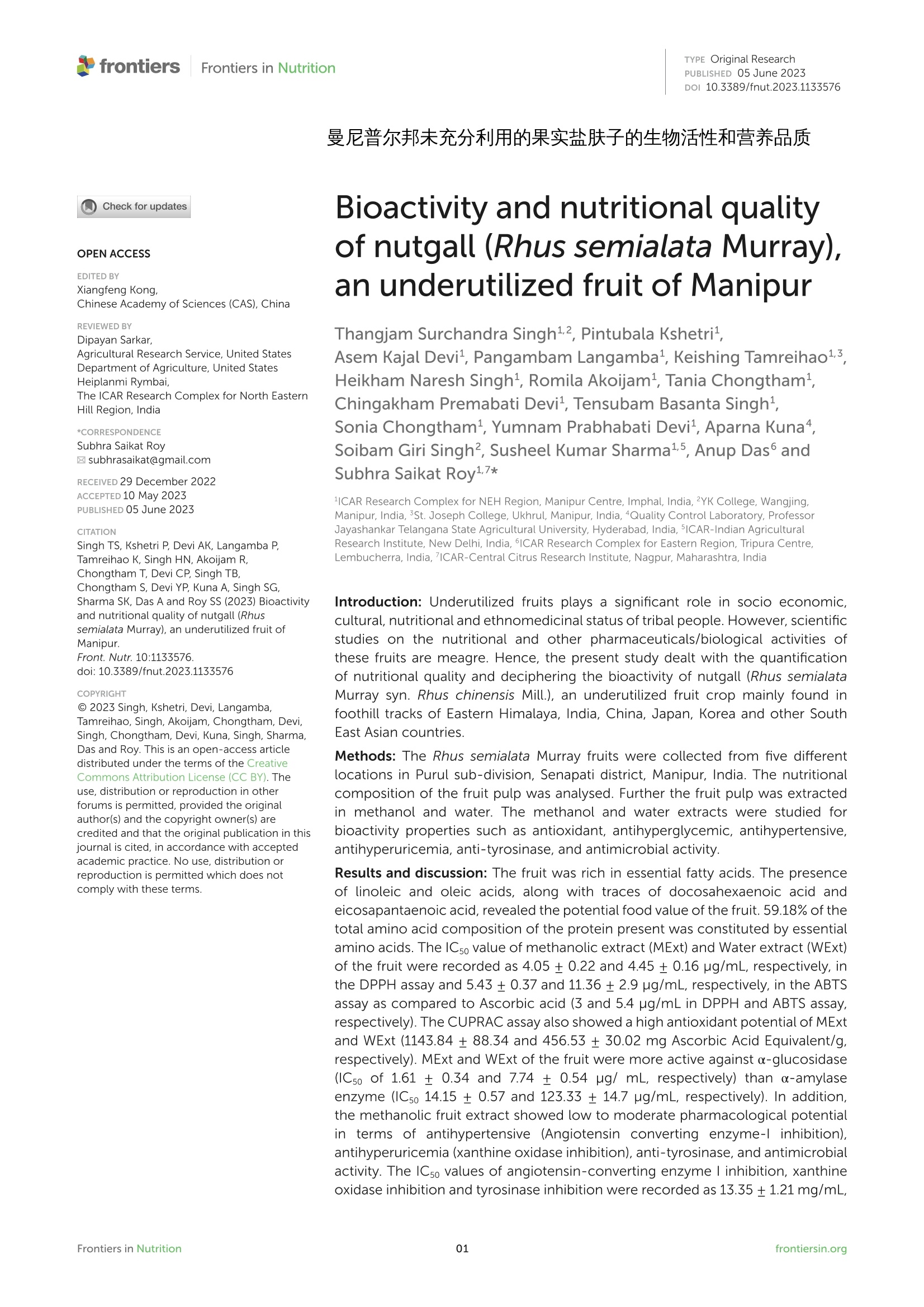
-
2/11

还剩9页未读,是否继续阅读?
继续免费阅读全文产品配置单
中国格哈特为您提供《未充分利用的果实盐肤子蛋白质、总脂肪、脂肪酸含量的检测》,该方案主要用于其他水果制品中营养成分检测,参考标准《GB 5009.6 食品中脂肪的测定》,《未充分利用的果实盐肤子蛋白质、总脂肪、脂肪酸含量的检测》用到的仪器有格哈特全自动超级总脂肪测定系统、格哈特快速干燥仪STL56、格哈特杜马斯定氮仪DT N Pro、格哈特带自动进样器凯氏定氮仪VAP500C、格哈特强力高重现振荡器LS500/RO500、滤纸筒、德国移液器MM。
我要纠错
相关方案


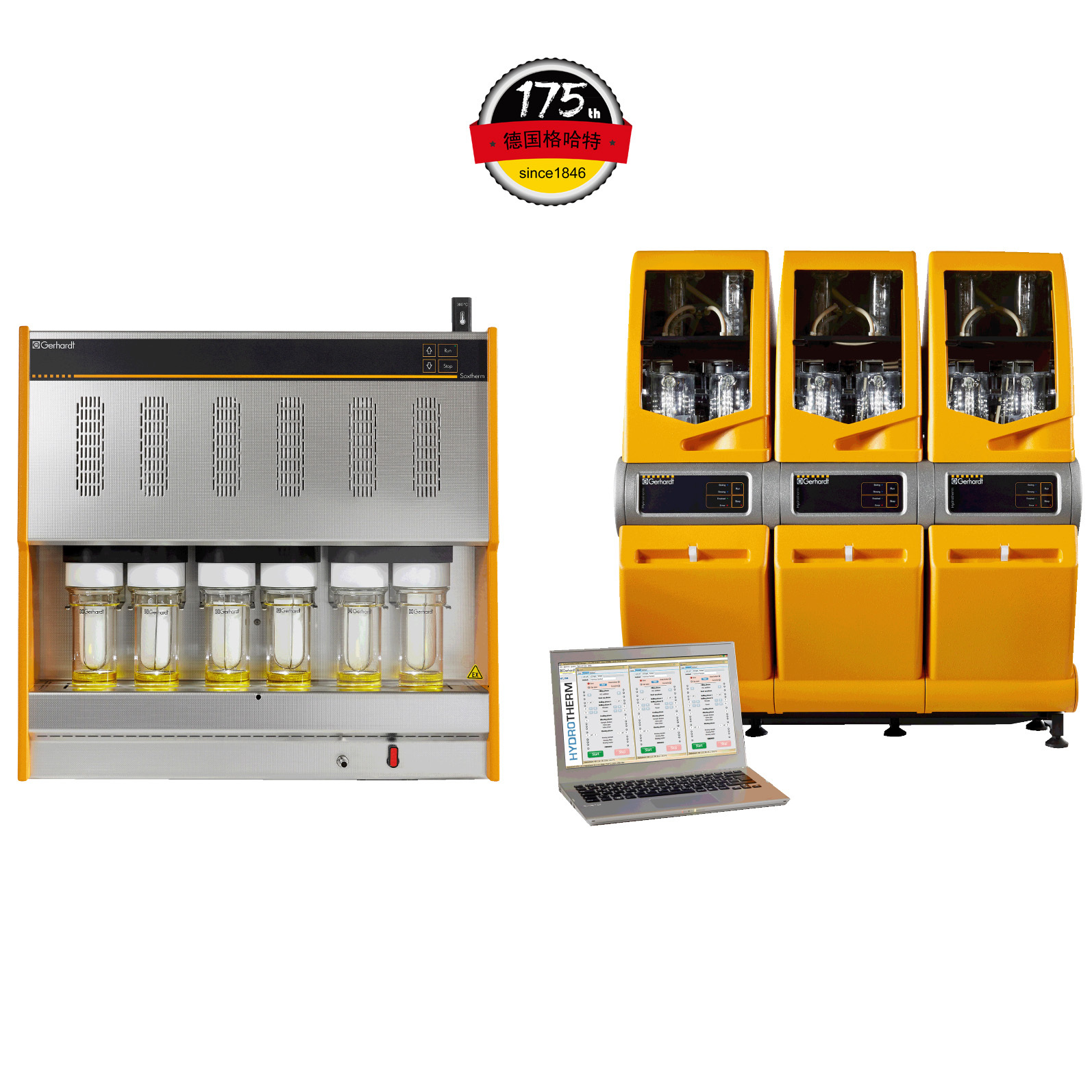

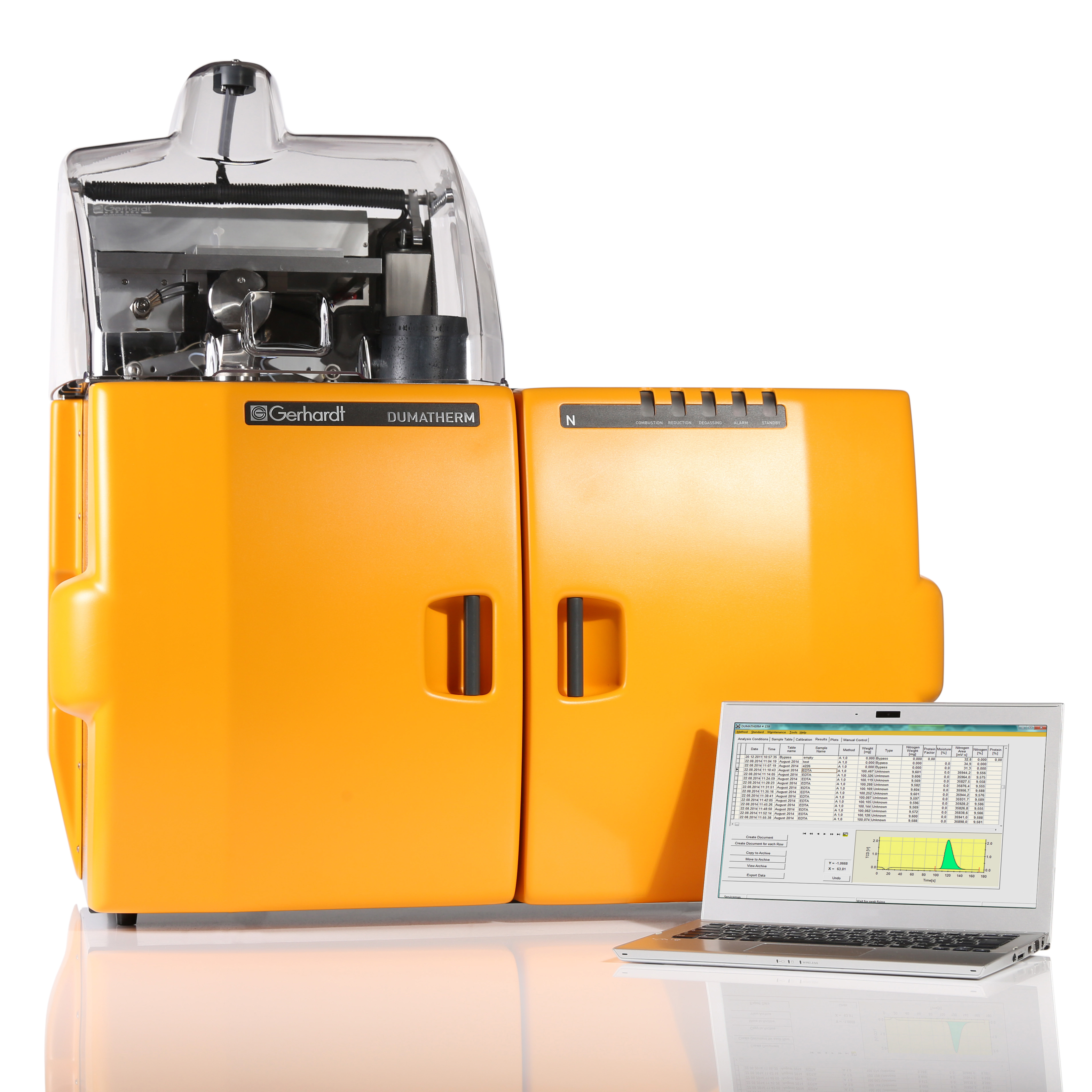
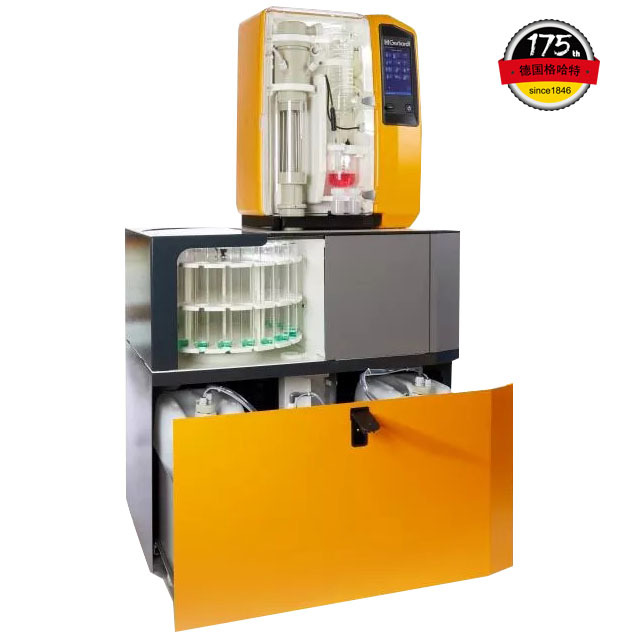
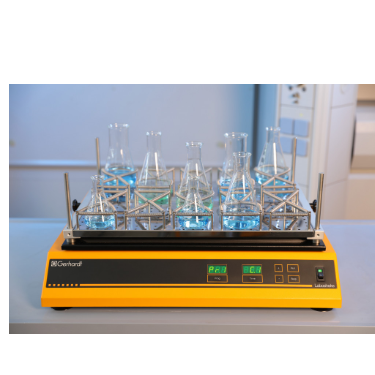
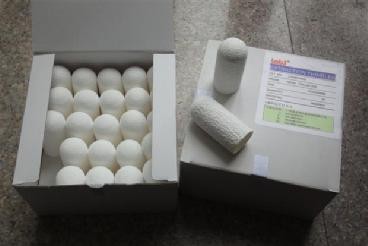
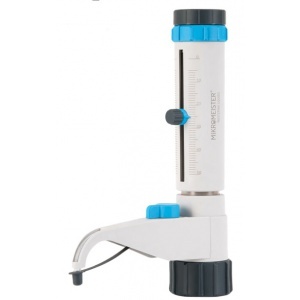
 咨询
咨询